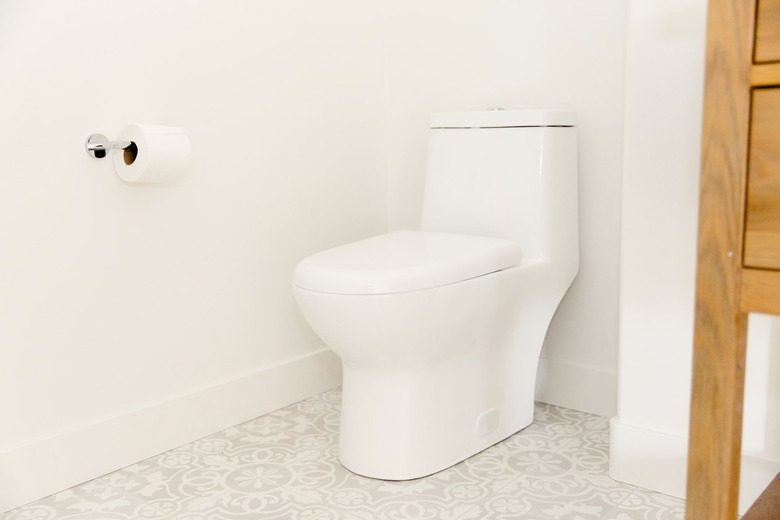How To Repair The Floor Under A Toilet
Toilet wax rings are pretty reliable and usually last the life of the toilet, but if one is installed improperly and begins to leak, water damage to the subfloor is inevitable. As the wax ring continues to leak, the subfloor gets wet and spongy, and that compounds the problem by creating wider separations in the ring through which more water can leak.
The result is that the toilet rocks and sways when you're using it, and as the subfloor absorbs toilet water, it begins to smell. You can rectify this unpleasant situation by replacing the subfloor under the toilet. This involves pulling the toilet, replacing the wet subflooring (which often also requires removal and replacement of the floor covering), and setting the toilet back with a new wax ring. Dealing with the toilet flange — the fitting that connects the toilet to the waste pipe — can be the most challenging part of this procedure.
Dealing With the Toilet Flange
After you pull the toilet, which involves shutting off the water, draining the tank, removing the toilet bolts, and lifting away the toilet, you'll uncover the toilet flange. Most contemporary ones are plastic, but if you have old plumbing, the flange may be made of cast iron. It's physically connected to the waste line, so even after you remove the screws, you can't remove it. If it's in good shape, you can probably work around it and not have to remove it, but sometimes, removing it is the only way to get to the subfloor.
Cutting out an old cast iron flange is a job for a plumber, but you should be able to remove a plastic one if you work carefully. First, use a reciprocating saw to cut the pipe under the flange flush to the floor. Then, use the saw to make several vertical cuts through the flange but not through the pipe into which it's inserted. Finally, use a chisel to wedge the pieces away from the pipe. If you don't feel comfortable doing this, get a plumber to help to avoid damaging the waste pipe.
Remove the Damaged Flooring
You'll want to cut out all the water-damaged subflooring, and that may mean removing enough floor covering to expose it. You'll have to replace the floor covering later, and the procedure for doing that depends on the material.
Draw out a rectangular section on the subfloor that completely encloses the damaged area. This section should terminate on each side with a joist to give you something to which you can attach the new subfloor. Cut out the section with a circular saw set to a depth equal to the thickness of the flooring. If the flange is still in place, cut two lines in the middle of the section with a reciprocating saw that extends as close to the flange as possible so you can remove the subfloor in two pieces.
Repair the Floor Under the Toilet
After the subfloor has been removed, check the joists for water damage and reinforce rotted sections by sistering on lengths of new joist material. Cut two lengths of joist material to fit crossway between the joists and screw them in place so the edges bisect the edges of the cut-out section. Cut a new piece of subflooring with the same thickness as the existing one to the dimensions of the cutout and screw it to the joists. Then, cut a hole for the flange with a reciprocating saw. If the flange is still in place, cut two pieces of subflooring with notches for the flange, insert them from either side of the flange, and screw them down.
If you had to remove the flange, replace it now by gluing it to the waste pipe. Screw the existing or replacement flange to the subfloor. Now, you can replace any floor covering you had to remove and set the toilet back in place with a new wax ring.
